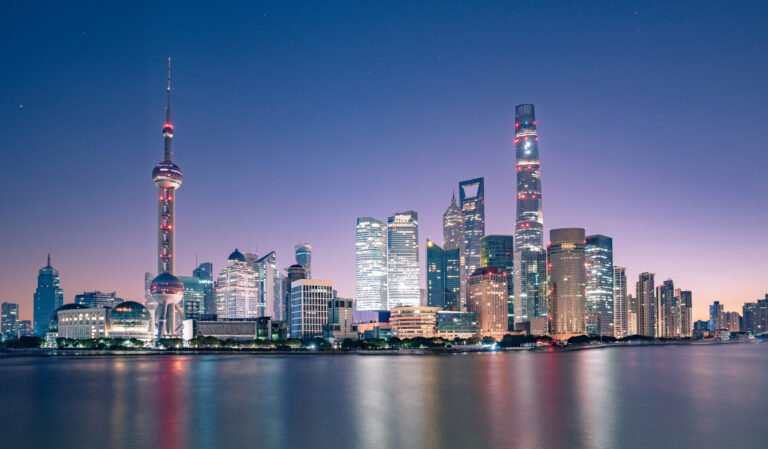What is now modern-day Shanghai was first inhabited around 6,000 years ago. Originally a small agricultural village, Shanghai really started to develop as a leading trading port during the Qing dynasty (1644–1912), with foreign diplomats controlling the city.
Although nominally part of China, in reality, foreign diplomats controlled the city under the policy of extraterritoriality. Since the economic reforms of the early 1990s, the city has rapidly blossomed to become not only a major Asian financial centre but also the world’s busiest container port and important airport hub for passengers and cargo.
Shanghai first became a city in 1291 during the Yuan dynasty (1271–1368). Several villages were formed in the new Shanghai County on the site of what is now, the modern city centre. Shipping and fishing were the main activities. Under the Ming dynasty (1368-1644), a period of modest prosperity followed and in the early 15th century, the Huangpu River was dredged. The Huangpu River merges with the Yangtze River at Wusongkou, after which the combined waters flow into the East China Sea.
In 1553, a city wall was built to repel attacks by Japanese pirates. By the end of the Ming dynasty in 1644, Shanghai had also developed a significant reputation for trading in cotton and textiles. By the 18th and early 19th centuries, exports of Shanghai’s fine cotton and silks reached worldwide markets.
During the 19th century, the East India Company focused on Shanghai and the Yangtze River as a potential trade post for tea, silk, and opium, but were resisted by local officials, leading to the First Opium War with Britain (1839–1842). The Treaty of Nanjing led to an extensive and rapid international expansion with British, French, American and German merchants organising trading concessions, which were not subject to Chinese laws. The British established their concession in 1845, the Americans in 1848, and the French set up their concession in 1849 west of the old Chinese city and south of the British Concession. In 1850, the first English-language newspaper, the North China Herald, was published.
However, peaceful existence was disrupted in 1886 by the Taiping Rebellion. The first of several were by a triad group against the hated Qing dynasty, and much damage occurred, but the foreigners were mostly not affected. During this period, the Shanghai Municipal Council was created by Western traders to take care of urban maintenance and in 1863, the Americans joined with the British, and the Shanghai International Settlement was established. Its waterfront became the internationally famous 1.5 km long Bund, famous for its European style buildings and waterfront on the Huangpu River.
The Chinese retained control over the original walled city and the area surrounding the foreign enclaves. By the late 1860s, Shanghai’s official governing body had been practically transferred from the individual concessions to the Shanghai Municipal Council. No Chinese residing in the International Settlement were permitted to join the council until 1928.
The population of the city is now estimated to be around 29 million, and it is rated as a global leader in finance, research, science and technology, manufacturing, transportation, tourism, and culture. The Port of Shanghai is the world’s busiest container port. Shanghai Pudong International Airport handles over 3.1 million tonnes of cargo annually and is a main hub for around 35 main international airlines.
From its modest origins many centuries ago, Shanghai continues to flourish and sparkle as a leading global hub for business and tourism.





